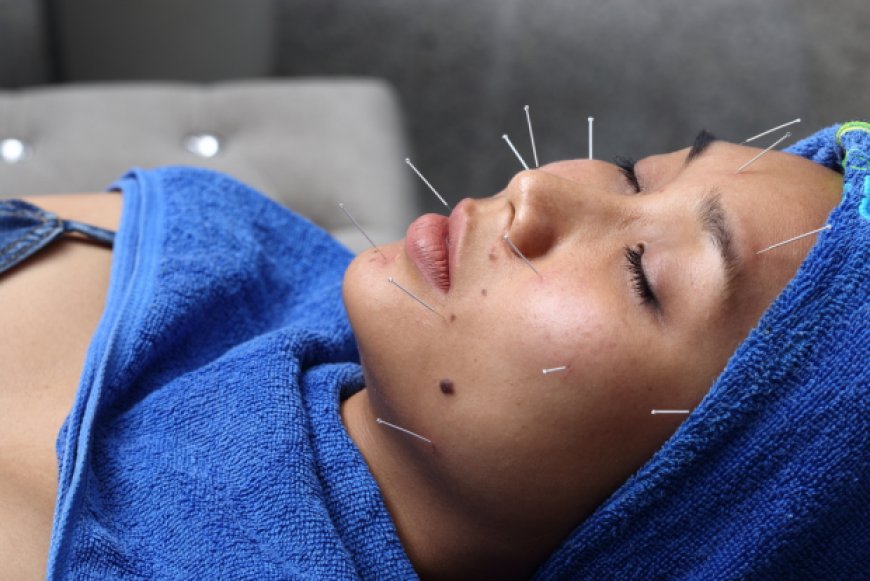How Early Treatment is Crucial for Facial and Bell’s Palsy Recovery
Discover why early treatment is crucial for facial palsy recovery. Learn about timely interventions, treatment options, and tips for optimal outcomes in this comprehensive guide.

Facial palsy, a condition characterized by the sudden weakness of facial muscles, can be distressing and significantly impact a person’s quality of life. Early intervention plays a vital role in enhancing recovery outcomes and minimizing long-term complications. In this article, we'll explore why timely treatment is essential for facial palsy recovery, the available treatment options, and how early action can make a significant difference.
Understanding Facial Palsy
What is bell's palsy physiotherapist?
Bell's palsy physiotherapist london is a medical condition where the muscles on one side of the face become weak or paralyzed, often causing a drooping appearance. This condition can affect basic functions like smiling, blinking, and speaking. It can occur due to various reasons, including viral infections, trauma, and neurological disorders.
Common Causes of Facial Palsy
- Bell’s Palsy: The most common form of facial palsy, often linked to viral infections like herpes simplex.
- Stroke: Disruption of blood flow to the brain, affecting facial muscles.
- Trauma: Injury to facial nerves from accidents or surgery.
- Infections: Ear infections, Lyme disease, or Ramsay Hunt syndrome.
- Neurological Disorders: Conditions like multiple sclerosis that affect nerve function.
Why Early Treatment is Crucial for Facial Palsy Recovery
Minimizes Nerve Damage
Early treatment is essential because it helps minimize nerve damage. The longer the facial nerve remains inflamed or compressed, the more likely it is to sustain permanent damage. Early intervention can reduce inflammation and protect nerve function, leading to a faster and more complete recovery.
Reduces the Risk of Long-Term Complications
Untreated or delayed treatment of facial palsy can lead to complications such as synkinesis (involuntary facial movements), muscle contracture, and chronic pain. Initiating treatment early helps prevent these issues by addressing the underlying cause before it worsens.
Improves Functional Recovery
Early treatment increases the likelihood of regaining normal facial function. When therapies are started promptly, patients have a better chance of restoring muscle strength and control. This is particularly important for individuals who rely on facial expressions for communication, such as public speakers, actors, and customer service professionals.
Boosts Psychological Well-being
Facial palsy can have a significant psychological impact, leading to anxiety, depression, and social withdrawal. Early treatment not only improves physical recovery but also enhances mental health by reducing the emotional distress associated with facial changes.
Treatment Options for Facial Palsy
Medications
- Corticosteroids: These are often the first line of treatment, used to reduce inflammation around the facial nerve.
- Antiviral Drugs: If a viral infection is suspected, antivirals like acyclovir may be prescribed alongside steroids.
- Pain Relievers: Over-the-counter pain medications can help manage discomfort.
Physical Therapy
- Facial Exercises: Specialized exercises can help strengthen facial muscles and improve coordination.
- Electrical Stimulation: Used to activate weak muscles, though its effectiveness is still debated.
- Massage Therapy: Helps relax tight muscles and improve circulation to the affected area.
Surgical Interventions
- Decompression Surgery: Rarely used, but may be considered if there is severe nerve compression.
- Nerve Grafting: In cases of severe or prolonged palsy, nerve grafting can help restore some muscle function.
The Role of Early Diagnosis
Prompt Identification of Symptoms
Recognizing the symptoms of facial palsy early on is crucial for timely treatment. Symptoms may include sudden weakness on one side of the face, drooping of the mouth or eyelid, loss of taste, or increased sensitivity to sound in one ear.
Consulting a Specialist
Seeing a healthcare professional, such as a neurologist or ENT specialist, at the first sign of symptoms can make a significant difference. They can perform diagnostic tests, including nerve conduction studies and imaging, to determine the cause and severity of the condition.
The Importance of a Multidisciplinary Approach
Combining Treatments for Optimal Results
A multidisciplinary approach that combines medication, physical therapy, and psychological support offers the best chance of recovery. Each treatment modality addresses different aspects of the condition, and early coordination between specialists can enhance outcomes.
Monitoring Progress
Regular follow-up appointments are essential to monitor recovery and adjust treatment plans as needed. Early intervention often requires continuous evaluation to ensure the best possible results.
Tips for Early Action in Facial Palsy Recovery
Recognize Early Symptoms
Being aware of early symptoms, such as facial drooping or inability to close the eye, allows for quicker action.
Seek Medical Attention Immediately
Don’t wait to see if symptoms improve on their own. Early consultation with a healthcare provider is crucial.
Start Physical Therapy Early
Begin physical therapy as soon as your doctor advises. The earlier you start, the better the chances of muscle recovery.
Conclusion
Early Treatment: A Key to Recovery Success
Early treatment is a cornerstone of successful facial palsy recovery. By minimizing nerve damage, reducing complications, and improving overall function, timely intervention can significantly enhance the quality of life for those affected. Recognizing the symptoms early and seeking immediate medical attention can make all the difference in achieving a complete and speedy recovery.












